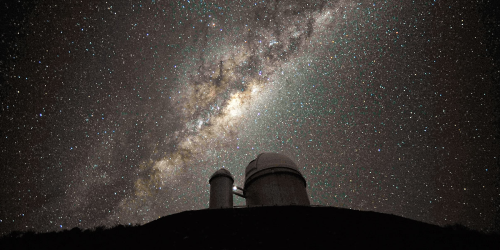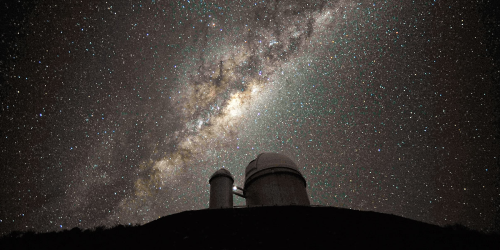Black Hole Test for Gravity
The huge gravitational pull of Sagittarius A*—a black hole behemoth at the center of our Galaxy—makes it an ideal object to verify the validity of theories of gravity, including the general theory of relativity (GR). But to date, researchers have confined their gravity checks to less massive astronomical objects, such as the Sun or white dwarfs. Now the GRAVITY Collaboration has performed a black hole test, using the light emitted from a star orbiting Sagittarius A*.
Scientists have repeatedly verified GR’s predictions of gravity. But the theory leaves unexplained some quirks of the Universe—for example, that the Universe’s visible mass and energy are insufficient to explain its observed accelerated expansion. Finding violations to the principles underpinning GR could point to resolutions for these quirks.
The GRAVITY Collaboration tested one such principle—known as local position invariance (LPI), which states that the results of nongravitational measurements of an object should be the same regardless of where in spacetime they are carried out. In their test, the team tracked light emitted from the hydrogen and helium atoms within a star called S2 as it orbited Sagittarius A*. Because of gravitational redshift, the light’s apparent frequency changed as it came close to the black hole, reaching its most red-shifted value when the star made its closest approach. According to LPI, this frequency change should be the same for light from both atoms. Within experimental errors, they found that was indeed the case.
The team’s observations provide a roadmap for future tests with next-generation telescopes, such as the Extremely Large Telescope (ELT), which could monitor the faint stars orbiting black holes in distant galaxies. The ELT is expected to be one million times more sensitive than current facilities, potentially allowing researchers to spot tiny violations of LPI and GR’s other foundational principles.
This research is published in Physical Review Letters.
–Katherine Wright
Katherine Wright is a Senior Editor of Physics.





